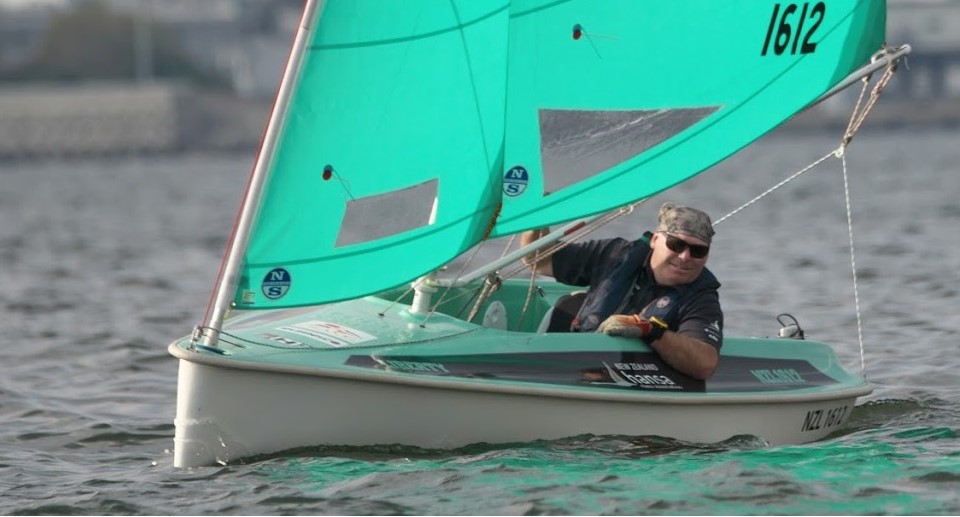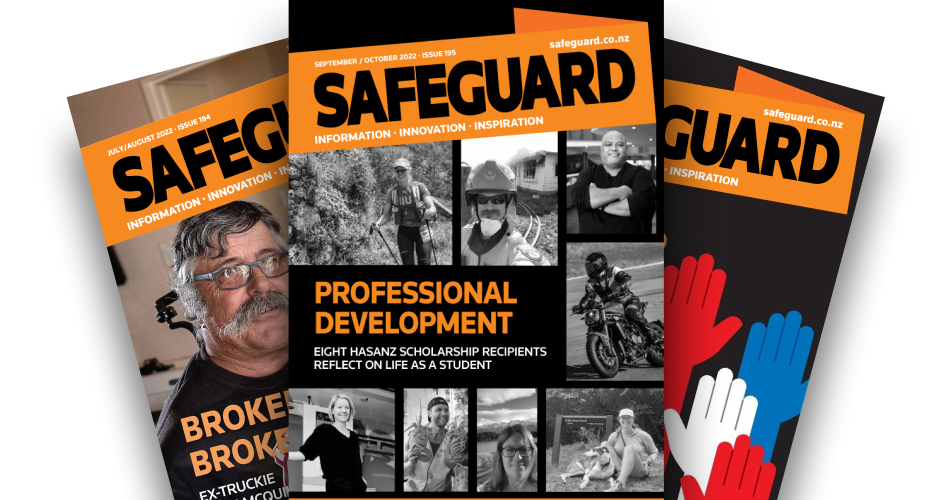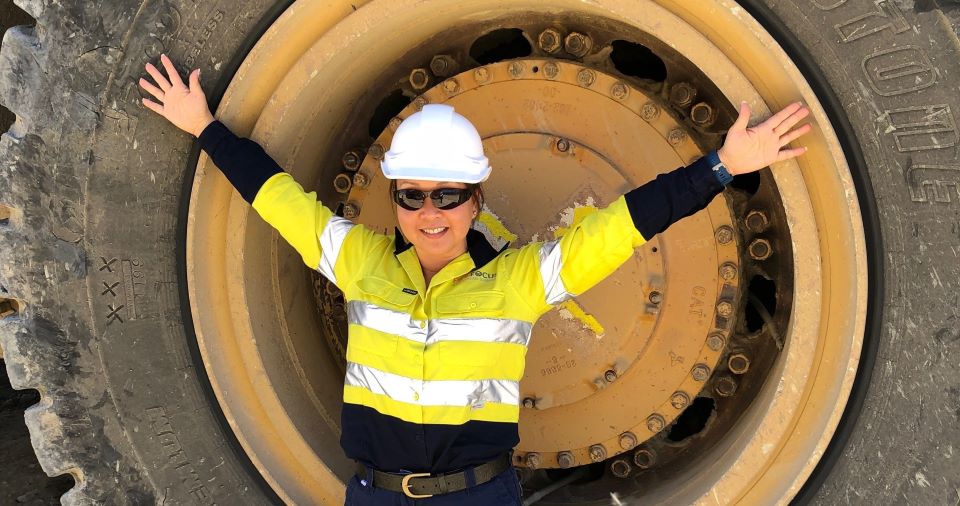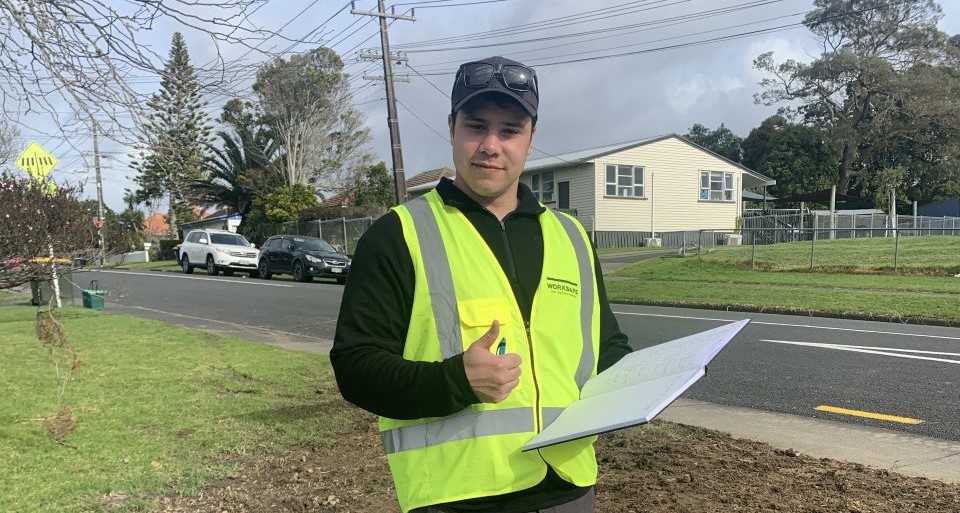People see you in a wheelchair and mostly they just see the wheelchair and think you’re paralysed. What they don’t see is the journey you go through, of kissing the dreams you had goodbye. Mourning the you that was, your future and the dreams you’ve lost.
Everything I know about the accident that changed my life is at secondhand. I have no recollection of what happened.
It was 1999. I was 38. I’d been working on the exterior of a shop in Auckland’s Mount Eden. The job was coming to an end and the scaffolding had come down. My last task was to go up the side of the building and epoxy mortar the holes where the dynabolts holding the scaffolding to the wall had been, and give it a touch of paint.
I knew it was kind of risky. I was tying my ladder to a rope over the top of the building, but every time I moved the ladder, I had to climb up the first time without being tied on. I should have insisted on a helper to foot the ladder.
I was nearly finished when the ladder slipped out as I was climbing it. The last thing I remember was reaching for the rope, trying to save myself.
Apparently, I banged my head on the wall, knocking me out, and I fell six metres, landing bent over backwards on the mirror arm of a van. It broke my fall and may have saved my life, but I broke my back at about chest height.
Humbling rehabilitation
In hospital they operated and put in two long rods the length of my back. I had broken four vertebrae and six ribs, one of which punctured my lung and lacerated my liver.
The first thing I remember is waking up in ICU. It was the middle of the night, and the nurse asked if I knew why I was there. I said no and she told me I’d broken my back and was paralysed.
I understood what she said, but I didn’t understand the impact at that stage and probably didn’t until I got into the ward. The nurses were doing a handover and I heard one of the young nurses asking ‘How do we look after him?’ That was a bit of a shock. Was I going to be that hard to look after?
I was in hospital for a few weeks before I was stable enough to go to the spinal unit, where I spent three months learning how to function as a paraplegic, learning wheelchair skills and what you have to do to look after your body.
It was very humbling to go from the hospital, where I was one of the most severely injured, to the spinal unit, where I was one of the least injured. There is little time for self-pity when you’re surrounded by people who are tetraplegics.
Back then they gave you benchmarks according to the level of your break. I set a goal of achieving all the things I needed to do so I could be discharged as quickly as possible. One of the things for my level was to be able to transfer yourself from the floor back into the wheelchair. I struggled with that for a long time, but when I finally managed it, that’s when they started talking about discharge dates.
Life dreams dashed
I had been in industrial coatings for 16 years and was about to get out of the trades when the accident happened. I’d built up enough income and we were building a boat to ship to Samoa for charter and commercial fishing. We were just waiting for some final red tape to clear, providing us with a duty- and tax-free holiday for five years – one of the benefits Samoa was offering to encourage new businesses to start up.
My wife Tulip and I had four kids aged two to nine. The accident changed everything. Our own dreams and the dreams we had for our kids. All that changed. That’s one of the hardest things.
The wheelchair skills and all that … it limits your mobility, but you live with it day in and day out and it becomes part of you reasonably quickly, but the dreams, the grieving you go through is quite a substantial part of the process and probably took me two years.
I made the kids my focus. I wanted to minimise the impact of my injury on them. They were my main goal. I might have been in a bit of denial at times, but I think having a focus like that helped me move on.
Opportunities to sail
As someone who had been active and into water sports, I found myself at a loose end pretty quickly. Distance swimmer Sandra Blewett was working in the spinal unit at the time and she taught me how to swim again.
At home, I’d go to the pool once or twice a week. Then, when I said I really wanted to get the connection back with the ocean, Sandra suggested a charity called Sailability, which provides opportunities for people with disabilities to sail. I was going every week and they asked if I’d be on their committee.
Last year I stepped down after 18 years as Sailability’s chairman. We had built up from four to 25 boats, and have programmes running from Wednesday to Saturday, usually twice a day.
We’ve just sent another group to the 2025 Hansa Class World champs in Sydney. We’ve trained people to Paralympic level and trained three world champions.
Now we can proudly say there is nobody we can’t get on the water, no matter what level of disability. We have the lifting equipment and facilities so that so long as you can move your chin, we can get you out on the water.
I’ve also sailed in three World Champs, getting to sixth place.
Giving back
I would like to have retrained as a draughtsman but couldn’t afford to, so instead I’ve focused on giving back to charities. I’m currently president of Spinal Support, which provides peer support for people with spinal injuries, and I’m president of the Hansa class in New Zealand. I’ve been on Yachting NZ’s committee for sailors with disabilities, and Parafed Auckland’s committee.
Initially it was to give back, because I received so much help going through the spinal unit and learning how to function again as a paraplegic. I think I’ve surpassed the need to give back now, but it is rewarding and when you’ve done it for a while you have a backbone of knowledge that people lean on, and that becomes important for the functioning of a committee or charity.
I get a lot of fulfilment out of being able to help people. The big thing I’ve realised is how resilient people are. You might look at someone in a chair and think you could never cope with that, but if you’re put in that situation and have no other option but to cope, you just deal with it. There is always hope and things you can get on with.




